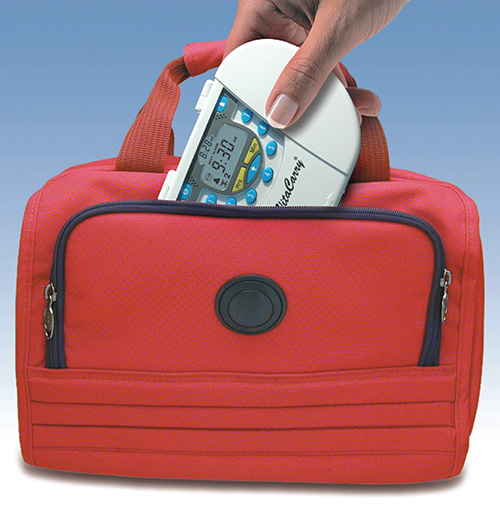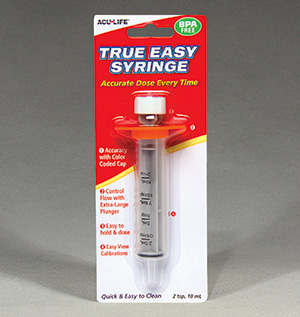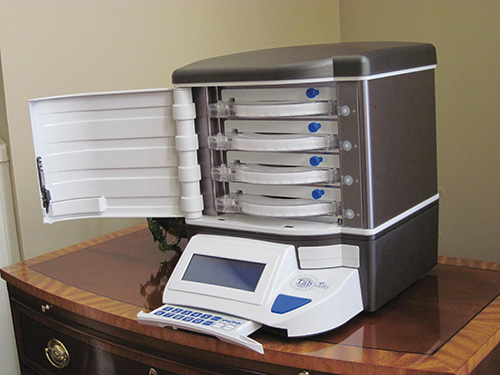The overall expense to the health care system of people not taking their medication as prescribed has been estimated at up to $300 billion, according to various research studies. The cost includes factors such as lost productivity, additional doctor and hospital visits, early deaths, amputations and more. The number was estimated at $177 billion in 2007 and has grown $130 billion in just seven years. About one-fourth of nursing home admissions are related to a patient’s inability to effectively manage medications at home. Systems and devices are available to manage medications, but Medicare won’t pay for them, even though they represent a missing piece of the puzzle during a time when people are taking more and more prescription drugs, some with complex dosing schedules whose adherence may mean life or death. Paul Brelo, general manager of MedCenter Systems, comments that the Medicare Part D benefit for prescription drugs is like, “giving people a car without an owner’s manual.” Providing basic interactive reminder systems along with prescription medicines would help the chronically ill, especially people who have multiple chronic illnesses and take dozens of pills a day, he says. Even so, Medicare rejected his company’s application for a HCPCS code. “It’s a major problem,” he says. “Everyone is arguing about health care costs, how we can contain them, but they are not willing to invest in a tool to lower costs.” He says the expense of providing a medication management system to 200 people would be quickly offset by saving the costs associated with just one night in a hospital. Brelo sees opportunity to sell more medication management systems among the typical DME/HME provider’s customer demographic. “Educate store personnel about what these products can do,” says Brelo. “If a 50-year-old man or woman comes in looking for bath grab bars, you could ask ‘does your mom have any problem taking her medications?’ And ‘have you considered a system like this?’ ” Asking these questions could result in a quick $74 retail sale. Growth of medication management systems is almost a certainty, given that about half of baby boomers take prescription drugs, and about half of people who use prescription drugs are not taking them correctly.
Products as Part of a Routine
MedCenter Systems, based in Cincinnati and in its seventh year of business, supplies a range of products—including interactive systems—to help patients manage their medications better. The flagship product is the 4-Alarm talking reminder clock, specifically designed for medication management and invented by the owners of the company for their own parents. The device’s pre-formatted reminders prompt users when to take their pills up to four times daily, featuring a friendly female voice that can be programmed with a pleasant message, such as “good morning.” The four alarm settings are for morning, lunch, dinner and bedtime.
 The MedCenter System features 31 individual pill boxes that store a full month of medication.
Photo courtesy of MedCenter Systems, LLC.
The MedCenter System features 31 individual pill boxes that store a full month of medication.
Photo courtesy of MedCenter Systems, LLC.Another MedCenter product is the Your Minder programmable six-alarm system that can be used either for medication management or for nonmedical reminders. The system can remind an elderly person to eat or to walk the dog. It enables up to six messages to be custom-programmed into the system and recorded by family members. Brelo recommends that patients implement the products as part of their routine, even before skills are diminished, so that they become second nature. In effect, “systemizing” lifestyle routines paves the way for better lifestyle management when skills begin to diminish, he says. “Part of the challenge is to get patients to use whatever system they have,” he says. “Once they become used to it, it becomes part of their lives.” HME/DME providers can increase their business in the medication management field by becoming a state Medicaid-approved, authorized dealer and by working with local agencies on aging, says Brelo, who says that Medicaid costs are approaching 50 percent of some state budgets, and more home care is a way of cutting those costs. He says if hospitals would provide medication management systems to patients at discharge, it would prevent returns to the hospital. (Medicare penalizes hospitals that readmit patients within 30 days of discharge.) MedCenter Systems provides free literature, and providers can print their contact information on the back and offer it as a takeaway for consumers. The company also provides television commercials on DVDs that can be played in the store.
Consumers Struggle With Schedules
“There’s more and more acceptance of technology as a way to manage medication as dosing gets more complex,” says Chris Gardner, eNNOVEA Life’s director of business and product development. “Typically there has not been a lot of technology in this area. There’s a conscious effort to make things less complex, but consumers struggle with even simple schedules—it’s a huge problem.”
 eNNOVEA’s VitaCarry advanced alarm pill reminder makes taking medication when traveling easy.
Photo courtesy of eNNOVEA.
eNNOVEA’s VitaCarry advanced alarm pill reminder makes taking medication when traveling easy.
Photo courtesy of eNNOVEA.“We are trying to help retailers recognize that today’s target customer is more accepting of products that include technology as part of their solution and has more discerning tastes with regard to quality and design,” says Gardner. eNNOVEA Life is the consumer medical business of eNNOVEA, Columbus, Ohio, which provides more than 31,000 unique parts and products serving industries from medical to automotive, energy to life sciences. eNNOVEA acquired the Variant product line of pill organizers in October 2012 and is filling out the product line to include anything that helps people plan their medication needs. Variant’s VitaCarry advanced alarm pill reminder helps people manage daily medication up to seven times a day, including a water-tight container, audio alarm, visual alarm and vibrating alarm to remind patients to take their meds. eNNOVEA also has the VitaCarry power pill grinder, which qualifies for Medicare reimbursement and serves the 12 percent of the market over age 65 that has dysphagia, or difficulty swallowing. The portable, handheld device is electric, fast and easy, and can grind pills to powder to make them easier to swallow. The company has historically sold its products through retailers and online boutiques. The VitaCarry power pill grinder would be the flagship product being sold through HMEs, a market the company is looking to expand into. In its product design, eNNOVEA focuses on protecting the contents from moisture and oxidation that can damage the potency of pills. “We also pay attention to styling, so people aren’t embarrassed when they walk around with their pill cases,” says Gardner. The products have also been re-branded to be ready to be put on a shelf, and to reflect a higher-end image than a typical chain drug store. The products are more attractive, durable and have more features. “Appearance and quality play a big role in the consumer’s buying decision,” says Gardner. “It’s one of the reasons they would take a product off the shelf, because it is a quality item and is designed well.” “We want to present these products in a group as a solution center, encouraging complete medication management and compliance,” says Gardner. eNNOVEA Life is working with students at Ohio State University and the Columbus College of Art and Design to study the challenges people face as their medication and supplement programs play a more important part of their daily regimen. Their findings and insights will help the company develop fresh, new products from a different perspective. eNNOVEA also has a partnership with M-Pack Systems to provide a line of flat prescription vials, which lower the costs of mail-order prescriptions and offer more “real estate” to include additional information—more detailed instructions or a QR code—on pill packaging. The label is also applied in a way to provide tamper evidence.
Broad Product Mix Increases Cash Sales
Not all medication management systems are automated. A big advantage of the DME/HME channel for medication management systems is the opportunity for a provider to have a dialogue with consumers at the point of sale, an opportunity larger retailers often don’t have, says Brendan Leonard, president of Health Enterprises, North Atteboro, Mass. Providers should emphasize solution and “Q&A” selling to people who walk through the door, seeking to understand the customer’s predicament and match it to a cash sale product that will have an impact.
 True Easy Syringe provides easy liquid dosing. Photo courtesy of Health Enterprises, Inc.
True Easy Syringe provides easy liquid dosing. Photo courtesy of Health Enterprises, Inc.“It’s an asset in the channel that can be developed,” he says. “The more providers engage with the customer and understand the challenges they are experiencing, and the more products they have to meet the needs, the more non-reimbursed products they can sell to offset lost [Medicare] revenue.” A second-generation, family-owned company, Health Enterprises specializes in a range of consumer needs, targeting various consumer health and beauty categories wherever it can add value. Products include first aid, hot/cold, nasal and allergy, foot care and medical compliance. “The greatest value for HMEs is to carry a broad mix of products to optimize their cash sales, but if they only want to order a select assortment of products, we don’t insist they buy the complete line,” says Leonard. “Every store and situation is unique, and we work to meet unique needs.” In the medication management area, Health Enterprises offers a new oral medication syringe that is color-coded to make it much easier to give the proper dosage. The company supplies a pill-splitter with a recessed blade and a full array of pill boxes, both in seven-day and 28-section design (four times a day for seven days). Leonard says pill boxes have largely remained the same over the years, although there are some improvements in aesthetics and access (more push buttons). “The opportunity is to continue to make these products easier to use,” he says. “The industry has made improvements in the aesthetics, the form and the function of pill boxes, even over the last few years.” Health Enterprises has a new concept in development that will incorporate smartphone technology into medication compliance. Leonard says smartphone penetration is increasing in the senior market—a main demographic for HMEs—and a new medication device will work with a smartphone as an integrated system, with the phone providing medication reminders. Leonard contends that HME/DME providers know more about effective retailing than might be apparent. Providers have historically been focused on meeting patients’ needs, and retail is just an extension of that—a new way to help the customer. “Providers should realize what they already know and connect the dots by considering the potential of other products to aid and assist the consumer,” he says. A good retail metric to consider is the value of the “basket” of goods sold to each customer who comes in the store. Selling ten $15 items can have the same impact on the value of that “basket” as selling a single $150 item. Passive selling of impulse items, such as medication management products, can also help. Related to product selection, Leonard suggests an emphasis on covering the basics. “You don’t need to over-SKU,” he says. Another opportunity might be to provide custom-printed pill boxes as a giveaway, says Leonard. A small, seven-day pill box with a provider’s name printed on it could provide low-cost advertising.
Ensuring Compliance and Accountability
Ensuring compliance is an essential facet of medication management, and the TabSafe automated medication dispenser has features to ensure a new level of compliance. The dispenser consists of four secured cartridges, which can be loaded with individual or multidose medications. About the size of a coffeemaker, the TabSafe unit sells for about $1,100 or could be leased for around $75 a month. In addition, there is a monthly fee for web hosting (which a dealer could mark up), and a dealer could also charge an installation fee. An HME provider could partner with a pharmacy to provide the system to an individual patient or family caregiver.
 The TabSafe automated medication dispenser ensures that meds are taken as prescribed.
Photo courtesy of TabSafe Medical Services, Inc.
The TabSafe automated medication dispenser ensures that meds are taken as prescribed.
Photo courtesy of TabSafe Medical Services, Inc.The unit can also be used by home health care companies to ensure their clients take their meds as prescribed, or could even be sold to a pharmacy, which would fill the machine each month with the prescribed medication and provide use of the unit as part of its service. Remote monitoring companies can also lease the device. Dr. Stephen L. Axelrod, CEO and chairman of TabSafe, Denver, says there are about 1,000 units in the field, with an adherence rate of about 96 percent. The system could also be sold to an individual, and a family member or private caregiver could load the machine each month. The cartridges lock in the medicine when it is filled, ensuring that medicine, such as opioids, cannot be diverted for use by someone else. Specific cartridges can be allocated as “PRN Only” to allow the dispensing of medications on an “as needed” basis and thus eliminate the risk of overdose. Custom visual reminders can also be added for activities of daily living such as “Check Blood Pressure” or “Meal Time.” The device can be PIN-protected. TabSafe interfaces with the Internet, and up to 40 messages a day can be programmed to various schedules and related to medication compliance, but also to everyday duties such as a doctor’s appointment, locking the door, watering the plants, or taking blood pressure or blood sugar readings. When it’s time for mom’s 8 a.m. meds, the machine beeps, then flashes an LED, and then provides a voice recording. Mom just presses a blue button to register that she has taken the meds. If an end-user doesn’t respond to a request, the unit repeats the message periodically. If non-compliance continues, the system automatically makes up to three sequential telephone calls to alert a family member or other caregiver that the meds have been missed. The system can also be integrated with a personal emergency response systems (PERS) to alert a central station monitor. Remedying the situation within a two-hour time window can prevent a missed dosage. Using the follow-up calls increases compliance by getting others invested in whether medicine is being taken as prescribed. About 70 percent of the time, Axelrod says, one call is all it takes to ensure continuing compliance. “Patients want to show that they are capable of being independent,” he says. Reimbursement for the machine is limited to Medicaid (it has been approved in 37 states) or to private pay or a hospice or palliative care situation. TabSafe also has an affiliated company called MonitorMyMeds.com, which is a simplified service retailing for $8/month that could be offered by HME providers. The system provides a telephone interface to users and a text or e-mail interface to a caregiver.
